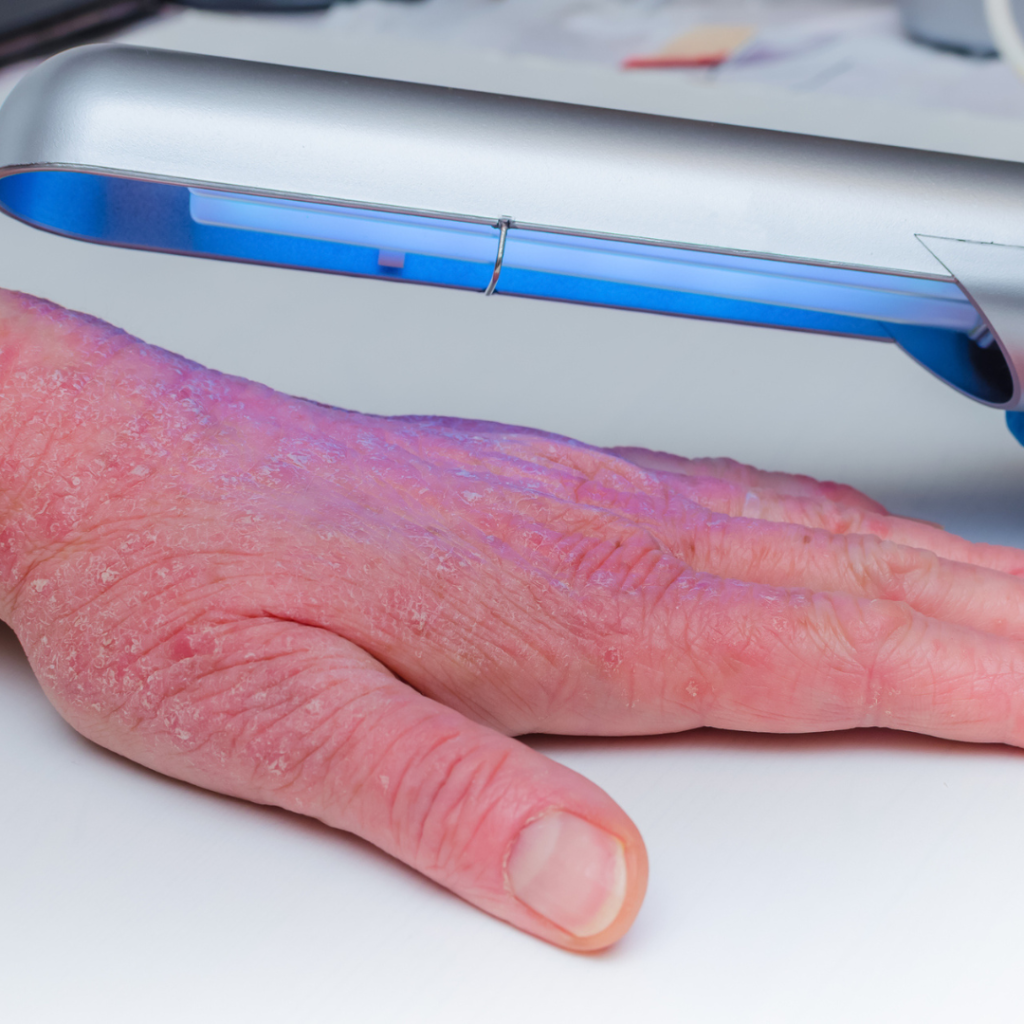
What is Atopic Dermatitis and How Can Phototherapy Help?
Atopic Dermatitis | Types Of Phototherapy| Red Light Therapy | Pros And Cons Of Phototherapy| Atopic Dermatitis Treatment Plan | Summary
What is Atopic Dermatitis and How Can Phototherapy Help?
Atopic dermatitis is a chronic skin condition where you can get inflamed, itchy, and scaly patches on the skin. It is a type of eczema that affects people of all ages but is most common in children. Atopic dermatitis can be caused by a combination of genetic and environmental factors. While there is no cure for atopic dermatitis, there are treatments available to help manage symptoms, such as phototherapy. Phototherapy is a medical treatment that uses light to reduce inflammation and improve skin symptoms.
It involves exposing the affected area to controlled amounts of ultraviolet light for a specific amount of time. Phototherapy has been shown to be an effective treatment option for atopic dermatitis, particularly for moderate to severe cases. It is important to consult with your dermatologist to see if phototherapy is the right option for you, as it may not be suitable for everyone.
Understanding the Different Types of Phototherapy for Atopic Dermatitis
There are different types of phototherapy available including UVB, UVA, narrowband UVB, and excimer laser therapy. UVB phototherapy is a common type of phototherapy that involves exposing the affected area to a specific wavelength of ultraviolet light. It can be administered in a medical setting or at home with a UVB light box.
UVA phototherapy, on the other hand, requires the use of a medication that makes the skin more sensitive to light before exposure. This type of phototherapy is typically administered in a medical setting. Narrowband UVB is a newer form of UVB phototherapy that emits a more specific wavelength of light, resulting in more targeted treatment and potentially fewer side effects.
Finally, there is excimer laser therapy, which uses a focused beam of light to treat specific areas of the skin affected by atopic dermatitis.

The Science Behind Red Light Therapy for Eczema
Red light therapy is a treatment that uses special lights to help people with eczema. The therapy works by shining red and near-infrared light on the affected area of the skin. This light helps reduce swelling and helps the skin heal faster. It can even help make scars less noticeable.
The light from the therapy goes through the skin and helps produce collagen. Collagen is a substance that helps the skin fix itself and become healthy again. Red light therapy also helps improve blood flow and oxygen to the skin. This helps the skin heal faster and reduces swelling.
Scientists have done some studies on red light therapy and found it works well for some people with eczema. But, they still need to do more research to understand how well it works and if there are any side effects.
The Pros and Cons of Phototherapy: Risks, Benefits and Side Effects
Phototherapy is a medical treatment that uses light to help people with atopic dermatitis. This treatment has both benefits and risks that you should know about. The good thing about phototherapy is that it can reduce inflammation and make symptoms of atopic dermatitis better. Also, it’s a non-invasive treatment that can be done in a hospital or at home with a special light box.
However, there are some risks to consider. Phototherapy can cause skin irritation or burning in some people. If you’re exposed to ultraviolet light for a long time, it can increase your risk of getting skin cancer. Some medications and medical conditions may also make phototherapy unsafe or not work well.
It’s important to talk to a dermatologist before starting phototherapy to see if it’s the right treatment for you. They can tell you about the potential risks and side effects, and if phototherapy is safe for you to use.
Making the Decision: Should Phototherapy be a Part of Your Atopic Dermatitis Treatment Plan?
If you are living with atopic dermatitis, it is important to work with a dermatologist to develop a treatment plan that works best for you. Phototherapy may be a potential treatment option to consider, but it is not suitable for everyone. Ultimately, the decision to include phototherapy in your treatment plan should be made in consultation with your healthcare providers.
Your healthcare practitioner can help assess the potential benefits and risks based on your individual case and medical history. They can also help you explore alternative treatment options if phototherapy is not the best choice for you.
Conclusion
Atopic dermatitis is a chronic skin condition that can affect people of all ages. Although there is no cure for it, there are ways to manage the symptoms. One of these ways is phototherapy. Phototherapy is a medical treatment that uses different kinds of light to make your skin better. There are different types of phototherapy, such as UVB, UVA, narrowband UVB, and excimer laser therapy. Red light therapy can also help some people with eczema. But like any medical treatment, phototherapy has both benefits and risks. That’s why it’s important to talk to a dermatologist to find out if it’s a suitable treatment option for your individual case.
References
National Eczema Association: Prescription Phototherapy
Health Link BC: Phototherapy for Atopic Dermatitis
WebMD: Phototherapy for Atopic Dermatitis
National Library of Medicine: Phototherapy for Atopic Dermatitis
American Academy of Dermatology Association: Eczema Treatment: Phototherapy
